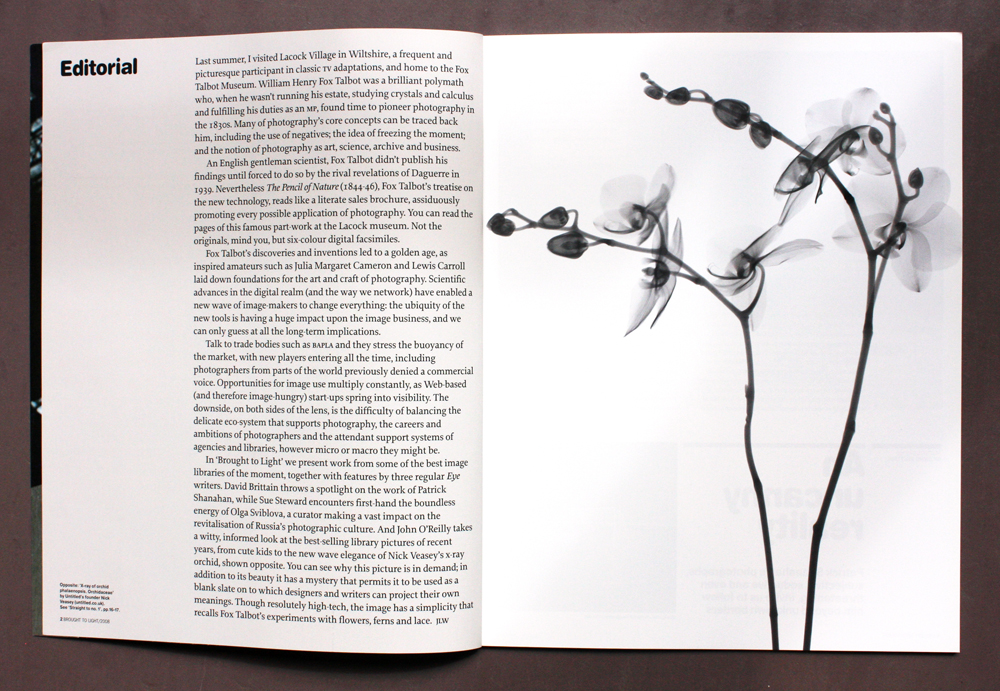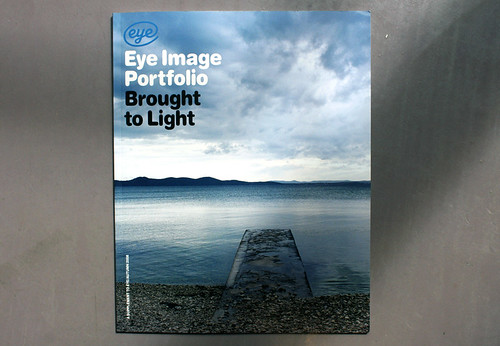Autumn 2008
Brought to Light
Editorial

Last summer, I visited Lacock Village in Wiltshire, a frequent and picturesque participant in classic TV adaptations, and home to the Fox Talbot Museum. William Henry Fox Talbot was a brilliant polymath who, when he wasn’t running his estate, studying crystals and calculus and fulfilling his duties as an MP, found time to pioneer photography in the 1830s. Many of photography’s core concepts can be traced back to him, including the use of negatives; the idea of freezing the moment; and the notion of photography as art, science, archive and business.
As an English gentleman scientist, Fox Talbot didn’t publish his findings until forced to do so by the rival revelations of Daguerre in 1939. Nevertheless The Pencil of Nature (1844-46), Fox Talbot’s treatise on the new technology, reads like a literate sales brochure, assiduously promoting every possible application of photography. You can read the pages of this famous part-work at the Lacock museum. Not the originals, mind you, but six-colour digital facsimiles.
Fox Talbot’s discoveries and inventions led to a golden age, as inspired amateurs such as Julia Margaret Cameron and Lewis Carroll laid down foundations for the art and craft of photography. Scientific advances in the digital realm (and the way we network) have enabled a new wave of image-makers to change everything: the ubiquity of the new tools is having a huge impact upon the image business, and we can only guess at all the long-term implications.
Talk to trade bodies such as BAPLA and they stress the buoyancy of the market, with new players entering all the time, including photographers from parts of the world previously denied a commercial voice. Opportunities for image use multiply constantly, as Web-based (and therefore image-hungry) start-ups spring into visibility. The downside, on both sides of the lens, is the difficulty of balancing the delicate eco-system that supports photography, the careers and ambitions of photographers and the attendant support systems of agencies and libraries, however micro or macro they might be.
In ‘Brought to Light’ we present work from some of the best image libraries of the moment, together with features by three regular Eye writers. David Brittain throws a spotlight on the work of Patrick Shanahan, while Sue Steward encounters first-hand the boundless energy of Olga Sviblova, a curator making a vast impact on the revitalisation of Russia’s photographic culture. And John O’Reilly takes a witty, informed look at the best-selling library pictures of recent years, from cute kids to the new wave elegance of Nick Veasey’s X-ray orchid. You can see why this picture is in demand; in addition to its beauty it has a mystery that permits it to be used as a blank slate on to which designers and writers can project their own meanings. Though resolutely high-tech, it has a simplicity that recalls Fox Talbot’s experiments with flowers, ferns and lace. JLW
Eye is the world’s most beautiful and collectable graphic design journal, published quarterly for professional designers, students and anyone interested in critical, informed writing about graphic design and visual culture. It is available from all good design bookshops and online at the Eye shop, where you can buy subscriptions, back issues and single copies of the latest issue.

